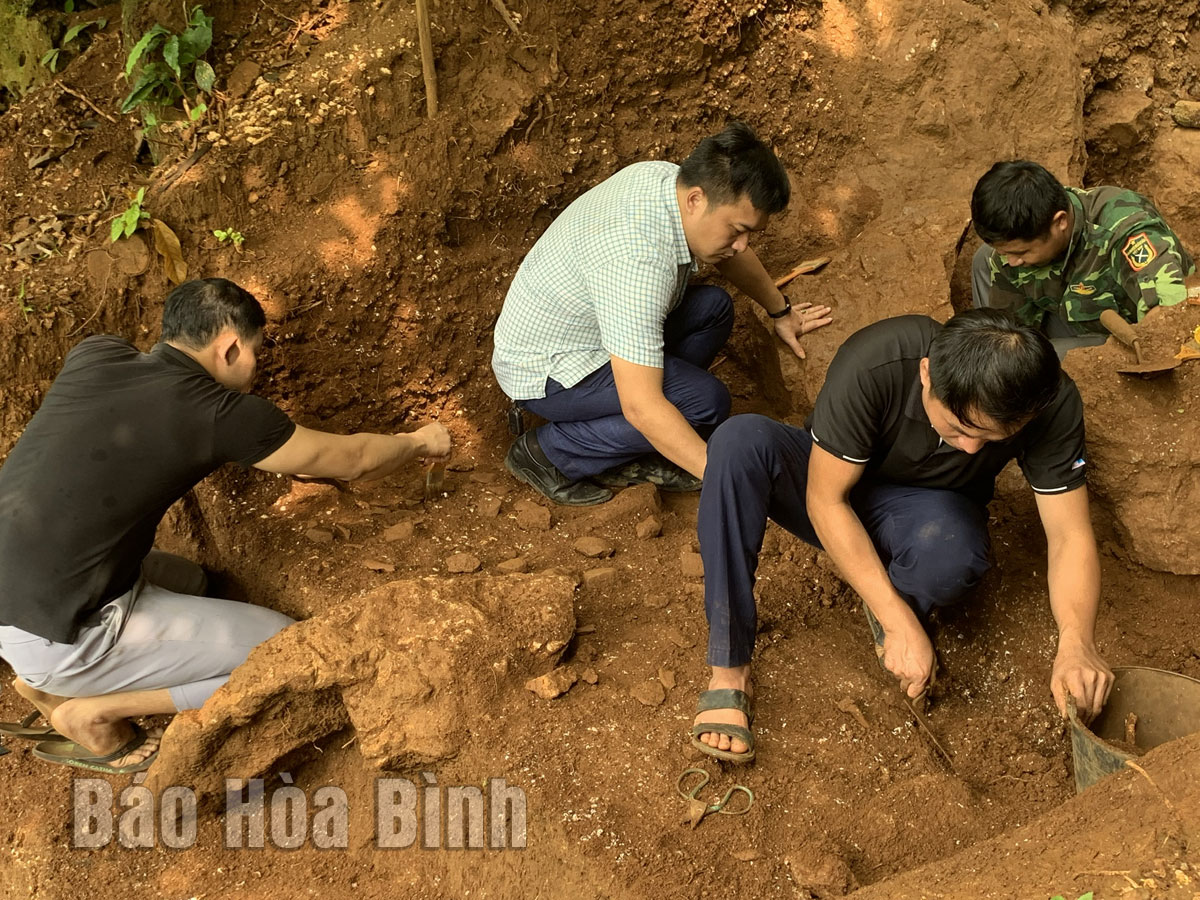



Personnel from the Hoa Binh Museum and the Southeast Asian Prehistoric Research Center excavate at the Mai da lang Vanh relic site in Yen Phu commune, Lac Son district.
In 1965, at Tham Khuyen cave, Binh Gia district, Lang Son province, scientists found human teeth lying in red sediment containing bones of animals dating back from the Canh Tan period. These teeth have the characteristics of both human and ape teeth. This is solid evidence of a human-ape existence in Vietnam 300,000 years ago.
In 1984, in Ma Dieu cave, Ha Trung commune, Ba Thuoc district, Thanh Hoa province, archaeologists discovered more than 300 Paleolithic artifacts. From 1986 to 1989, thousands of stone artifacts were unearthed. In particular, 10 ancient tombs were found here.
According to Nguyen Viet, Director of the Southeast Asian Prehistoric Research Center, 108 stone artifacts and some animal bones were recovered at the relic of Trai hamlet, Tan Lap commune, Lac Son, in 1980. This was a cultural relic of the Hoabinhian which was rich in culture and artifacts. In May 1981, the Institute of Archaeology unearthed 1,150 artifacts, including stone tools, bones, pottery pieces, and rice grains. In addition, they also discovered an ancient path dating back thousands of years ago. In conclusion, the cave is a permanent residence, and a workshop for making tools of the Hoabinhian inhabitants, revealing a possible existence of a primitive wet rice farming area during the period.